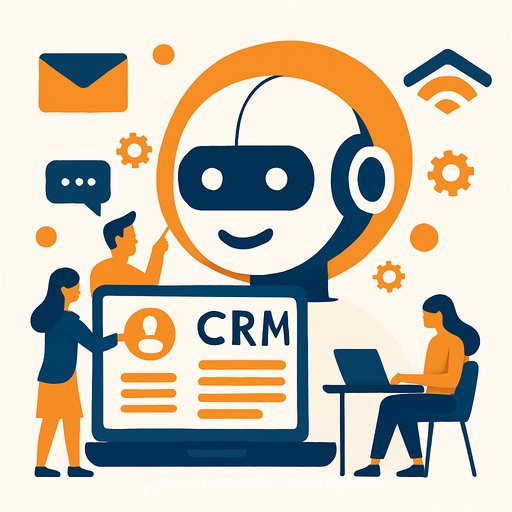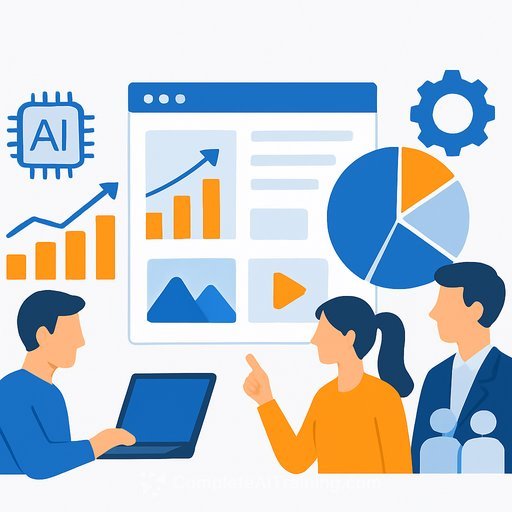Can Klaviyo's AI-Driven CRM Shift Strengthen Its Competitive Edge in B2C Marketing?
In late September 2025, Klaviyo launched its Marketing Agent and broadly released its Customer Agent, moving toward an AI-first B2C CRM that unifies data, marketing, service, and analytics. For marketers, that signals a clear intent: fewer silos, more automation, and faster feedback loops across the entire customer lifecycle.
The goal is to move Klaviyo from a "marketing tool" into a more complete CRM layer that can plan, execute, and learn with minimal manual work. The real test is how quickly customers adopt these AI-driven features and whether they produce measurable gains in revenue per message, conversion, and retention.
What Changed-and Why It Matters to Marketers
- Marketing Agent: Automates segmentation, creative iteration, timing, and channel selection using Klaviyo's first-party data. Expect campaign setup to shift from manual building to prompt-driven workflows.
- Customer Agent: Extends into service and post-purchase moments, connecting support signals with marketing to reduce churn and drive repeat orders.
- Unified stack: With July 2025's Klaviyo Service laying the groundwork, marketers can coordinate messaging and support in one place, improving continuity from acquisition to LTV.
Short-Term Reality Check
The main near-term risk-pressure on gross margins from channel costs-still stands. SMS, RCS, and WhatsApp carry real costs, so efficiency per message sent matters more than volume.
The upside is in AI-driven upsells and workflow automation. If adoption is strong, teams can do more with the same headcount and budget, but the gains will depend on smart guardrails and clean data.
What to Pilot Next Quarter
- Lifecycle orchestration: Use Marketing Agent to run triggered flows (welcome, browse/cart abandonment, winback) with strict CPA and margin targets.
- Service-to-marketing handoff: Use Customer Agent to tag support intents (shipping, sizing, returns) and trigger appropriate follow-ups that protect retention.
- Creative iteration at scale: Let the agent propose variants, but require human review for offer logic, tone, and compliance.
- Channel mix guardrails: Define when to use email vs SMS vs WhatsApp, based on AOV, margin, and consent status. Cap high-cost channels unless predicted LTV justifies them.
- Data hygiene: Standardize product, event, and consent fields before turning on fully autonomous flows.
Metrics That Matter
- Revenue per send by channel and marginal contribution after variable messaging costs.
- Opt-out and complaint rates across SMS, RCS, and WhatsApp; protect list health as frequency increases. For WhatsApp platform details, see Meta's docs: WhatsApp Business Platform.
- Agent adoption and uplift: % of flows run by agents, time-to-launch, creative throughput, and incremental revenue vs human-only baselines.
- Service impact: First-contact resolution, return-to-repurchase rate, and churn deltas tied to Customer Agent interventions.
Risks to Watch
- Channel cost inflation: As SMS, RCS, and WhatsApp usage grows, blended margins can compress without tight controls.
- Data quality: AI agents amplify whatever data you feed them. Broken events, stale segments, or poor consent handling will compound errors.
- Over-automation: Keep a human in the loop for promotions, brand voice, and sensitive service moments.
Investor Snapshot (Context for Budget Owners)
The current narrative projects US$1.9B revenue and US$88.3M earnings by 2028. That implies 21.4% annual revenue growth and a swing from -US$66.7M to +US$88.3M in earnings.
One fair-value estimate cited is US$46.70, suggesting an 80% upside from the referenced price, while community estimates vary between US$14.85 and US$46.70 based on four forecasts. Regardless of viewpoint, adoption of the new AI products is a pivotal variable for both growth and sentiment.
Action Checklist for Marketing Teams
- Audit events, product catalog, and consent data; fix naming, timestamps, and identity resolution issues.
- Set channel-specific CPA/LTV thresholds; throttle spend where variable costs exceed marginal return.
- Start with 2-3 high-impact flows; measure agent vs manual performance with holdouts.
- Create approval workflows for offer logic, tone, and compliance before enabling autonomous sending.
- Report weekly on revenue per send, opt-outs, complaint rate, and repeat purchase rate by channel.
Bottom Line for Marketers
Klaviyo's agents can compress cycle time from idea to impact, especially across lifecycle automation and service-driven retention. The teams that win will treat AI as an operations layer, not a silver bullet-clear guardrails, clean data, and disciplined measurement will decide ROI.
Level Up Your Team's AI Execution
If you're building AI skills across campaign ops, creative testing, and automation, explore focused training for marketers: AI Certification for Marketing Specialists.
Your membership also unlocks:






